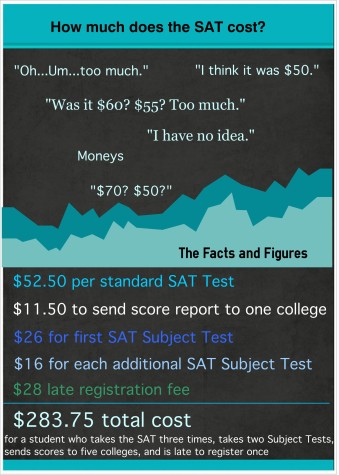Bias in the SAT?
With juniors beginning college counseling, standardized testing is on most Williston students’ minds. However, the amount of time and money required by the test often arises questions regarding the accuracy and legitimacy of a test whose results can appear life altering.
 The College Board, a non-profit company that also oversees and administers all Advanced Placement tests and the CSS/Financial Aid Profile, a form required by many colleges for those applying for financial aid, administers the SAT.
The College Board, a non-profit company that also oversees and administers all Advanced Placement tests and the CSS/Financial Aid Profile, a form required by many colleges for those applying for financial aid, administers the SAT.
The College Board and the SAT have often come under scrutiny over the years and have been accused of abusing their monopoly over the field of standardized testing and of formulating biased tests that favor well-off whites.
The College Board’s only main competition is the ACT, which most colleges now accept as the equivalent of the SAT. However, competition for prices and between the tests does not really exist- most students simply take both without questioning the often outrageous fees. Fee waivers are available but only through a purportedly arduous and difficult application procedure.
The large role standardized testing plays in college admissions today has encouraged students to seek tutoring and training on the test to improve their scores. SAT tutoring began in 1938 with the introduction of Kaplan Educational Centers and since then, the SAT preparation business has become a billion dollar industry. Students can end up paying as much as $500 an hour for SAT prep, according to PBS’s report, “Secrets of the SAT.”
“If I had not taken a tutoring class I would not have learned the technique and would have gotten a significantly worse score,” Senior Gabe Jacobson says. He continues, “The fact that any student has to pay is a sign that this test is flawed, because it’s not an equal opportunity.”
The majority of test takers simply cannot afford to pay for substantial SAT tutoring, and many argue that this puts them at a disadvantage for college admission.
Jesse Ware ’14 also believes that the test is unfair. “It’s a torturous test that in reality does not test intelligence, but rather tests the ability to take tests,” he says. He explains that if one can be tutored to take a test of intelligence, that fact “proves its unreliability.”
Senior Bryan Hong visited Korea over the summer and observed that there, “parents spend thousands and thousands of dollars on the “best” [SAT prep] camps for their children, all in the hopes that they can break…whatever that “ideal” score they think college admissions wants to see.” Many Korean students participate in Hagwons, sometimes called “cram schools,” in order to improve their test scores.
“It isn’t a straight-up test: it’s a test you must have some knowledge about. The form, structure, and types of questions…not knowing this information puts you at a disadvantage,” Hong ’15 continues, explaining why tutoring is often necessary to succeed on the SAT.
Statistics also point to a racial imbalance within the current standardized testing system. In 2013, The College Board reported a 298-point gap between the average scores of African American or Black college bound-seniors and those of white college bound-seniors. The widest score gap showed that whites scored on average 97 points higher on the writing section than blacks.
Jacobson ’15 has noticed this alarming gap; “I was largely able to succeed at [the writing and reading] sections because…the sentences just made sense, but not every…person who is taking the SAT has my same background. All those people are at a disadvantage,” he notes.
In response to similar critiques on the national level, the SAT has been restructured. The new test will be put into place in 2016 and will feature a number of changes that the College Board believes will improve the test, including more practical vocabulary, an optional essay, and the availability of digital testing.
The College Board claims the new changes will help improve the accuracy of the test as a predictor of college success and that it will help “bridge economic and demographic barriers,” according to The Wall Street Journal.
However, the College Board’s monopoly remains, and only time will tell if the many changes in the structure of the test will resolve the major criticisms that the company has received for years.







